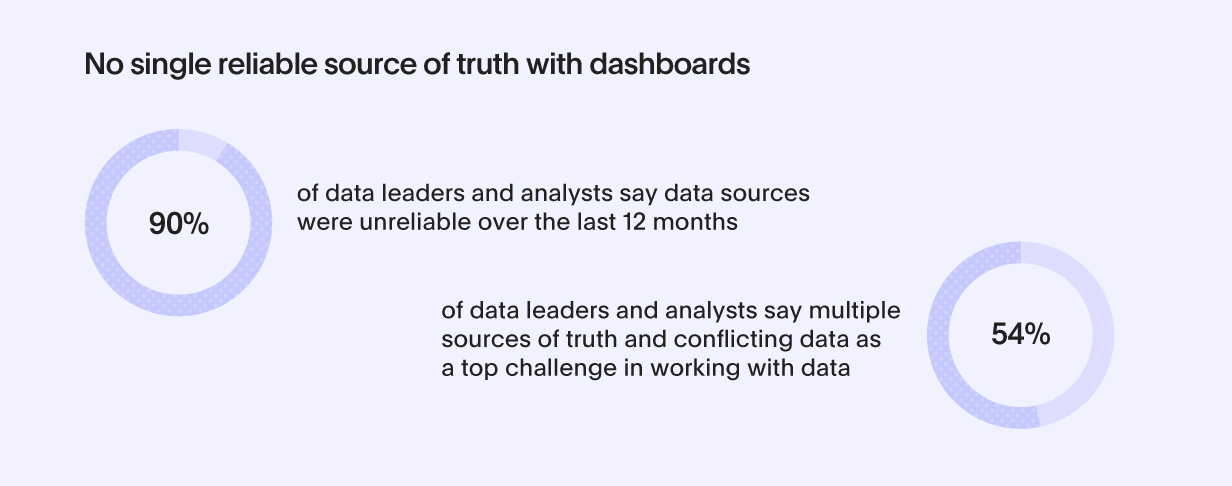As a modern data leader, you know that real-time access to data-driven insights is key to driving higher levels of business growth and innovation, and better customer experiences. You also know that when frontline employees have easier access to data they’re able to make better decisions that ultimately boost your bottom line. But what happens when employees don’t trust the data in front of them?
Over the years, static dashboarding tools have quietly sown a deep mistrust between employees and business data. Multiple sources of truth, delayed reports, stale data, and conflicts between what dashboards show and what they see in the field have all eroded people’s ability to “trust the data.” These tools have also created a world of chaos when it comes to defining data governance policies. In fact, 54% of data analysts and leaders report multiple sources of truth and conflicting data as a top challenge in working with data. And an additional 90% say numerous data sources were unreliable over the last 12 months. If that figure does not alarm you, it should.

So much of your organization’s success hinges upon business users having access to high-quality insights. It impacts everything from new revenue opportunities to customer engagement and satisfaction, and even how quickly you can react to competitive changes and market trends. But in order for individual employees or business groups to be willing to use data, they have to trust it. If business users see an error even once, confidence erodes dramatically. Lack of confidence doesn’t just translate to lack of adoption, the consequences directly impact your organization's revenue too with 76% of data leaders reporting missed revenue opportunities.
Trust and confidence are key to encouraging analytics usage
With fractured dashboard infrastructure comes fractured insights. That’s why it’s so common for analysts to come up with multiple answers to the same question, and why data teams are constantly scrambling to troubleshoot and reconcile differences in dashboard outcomes. This patchwork of dashboards and pipelines creates major blindspots, forcing data teams to focus on outputs rather than natively maintaining quality and consistency throughout the entire data-to-insights pipeline.
To break this cycle, you must rebuild your entire data supply chain to ensure transparency, trust, and easy access. Doing so means addressing major changes in the following areas:
Governance: Overcoming hybrid technology patchworks, individual desktop solutions, multiple publishing servers and movement of data.
Insight quality and consistency: Limiting insight duplication and inconsistencies across multiple desktop systems and rogue self-sourced data prep and blending by analysts who are crunched for time.
Shadow analytics: Acknowledging the uncomfortable fact that business users are constantly exporting and manipulating data in Excel because they can’t get the view they need or aren’t comfortable using dashboarding tools, thus introducing quality and version control issues.








